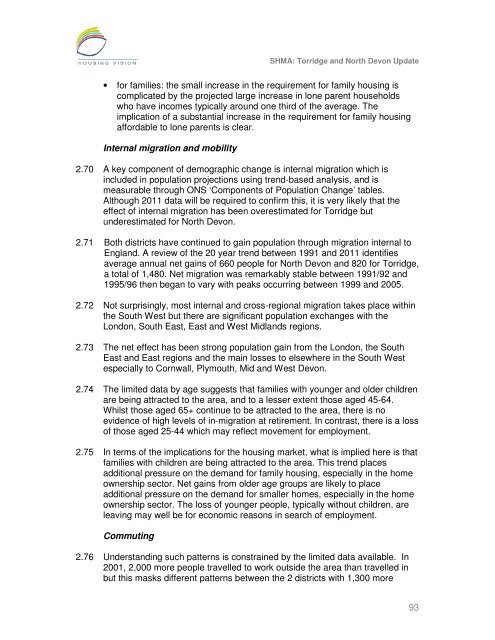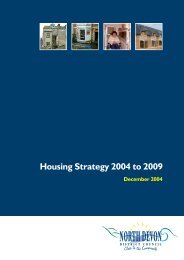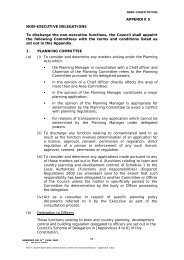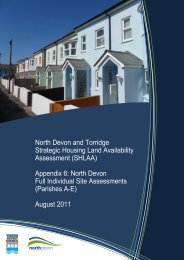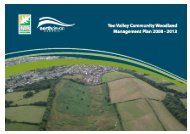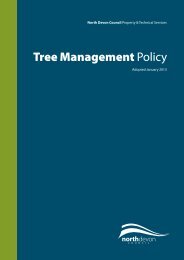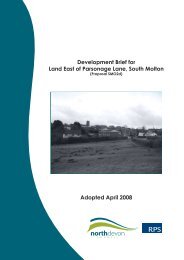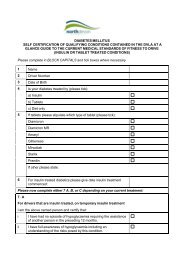Strategic Housing Market Assessment - North Devon District Council
Strategic Housing Market Assessment - North Devon District Council
Strategic Housing Market Assessment - North Devon District Council
You also want an ePaper? Increase the reach of your titles
YUMPU automatically turns print PDFs into web optimized ePapers that Google loves.
SHMA: Torridge and <strong>North</strong> <strong>Devon</strong> Update<br />
• for families: the small increase in the requirement for family housing is<br />
complicated by the projected large increase in lone parent households<br />
who have incomes typically around one third of the average. The<br />
implication of a substantial increase in the requirement for family housing<br />
affordable to lone parents is clear.<br />
Internal migration and mobility<br />
2.70 A key component of demographic change is internal migration which is<br />
included in population projections using trend-based analysis, and is<br />
measurable through ONS ‘Components of Population Change’ tables.<br />
Although 2011 data will be required to confirm this, it is very likely that the<br />
effect of internal migration has been overestimated for Torridge but<br />
underestimated for <strong>North</strong> <strong>Devon</strong>.<br />
2.71 Both districts have continued to gain population through migration internal to<br />
England. A review of the 20 year trend between 1991 and 2011 identifies<br />
average annual net gains of 660 people for <strong>North</strong> <strong>Devon</strong> and 820 for Torridge,<br />
a total of 1,480. Net migration was remarkably stable between 1991/92 and<br />
1995/96 then began to vary with peaks occurring between 1999 and 2005.<br />
2.72 Not surprisingly, most internal and cross-regional migration takes place within<br />
the South West but there are significant population exchanges with the<br />
London, South East, East and West Midlands regions.<br />
2.73 The net effect has been strong population gain from the London, the South<br />
East and East regions and the main losses to elsewhere in the South West<br />
especially to Cornwall, Plymouth, Mid and West <strong>Devon</strong>.<br />
2.74 The limited data by age suggests that families with younger and older children<br />
are being attracted to the area, and to a lesser extent those aged 45-64.<br />
Whilst those aged 65+ continue to be attracted to the area, there is no<br />
evidence of high levels of in-migration at retirement. In contrast, there is a loss<br />
of those aged 25-44 which may reflect movement for employment.<br />
2.75 In terms of the implications for the housing market, what is implied here is that<br />
families with children are being attracted to the area. This trend places<br />
additional pressure on the demand for family housing, especially in the home<br />
ownership sector. Net gains from older age groups are likely to place<br />
additional pressure on the demand for smaller homes, especially in the home<br />
ownership sector. The loss of younger people, typically without children, are<br />
leaving may well be for economic reasons in search of employment.<br />
Commuting<br />
2.76 Understanding such patterns is constrained by the limited data available. In<br />
2001, 2,000 more people travelled to work outside the area than travelled in<br />
but this masks different patterns between the 2 districts with 1,300 more<br />
93


